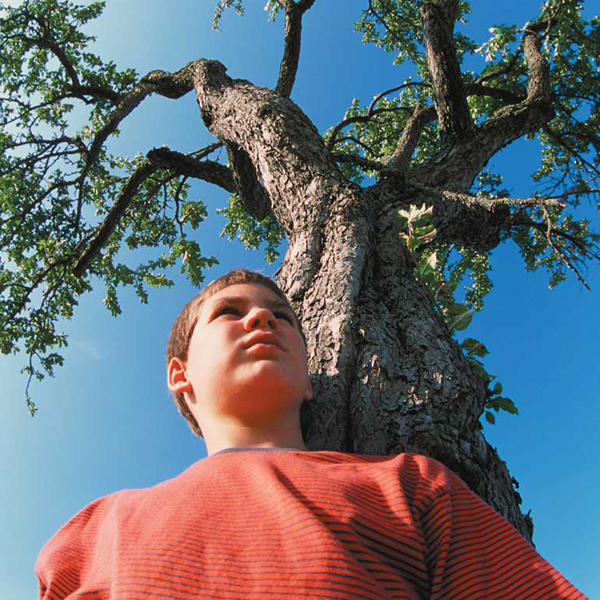Eight-year-old Laura burst into the house after school, yelling, “I can’t do it, I won’t do it!”
The “it” was an assignment to make a poster showing important family members, including photos, with labels describing their relationships to her. The posters would be displayed at the classroom open house. The teacher felt it would make each child proud and highlight the diversity of her classroom.
Adopted at age 5, Laura still struggled with the loss of her birth mother and biological half-sisters, who had been adopted by relatives in another part of the country. All she could think of was how important they were to her and that she didn’t have photos of them.
Perhaps the most dreaded of school assignments for families touched by adoption is the ubiquitous family tree. Students may encounter versions of this fearsome task from preschool through high school.
The very idea can raise questions of belonging, relatedness, difference, divided loyalty, confusion, and embarrassment — not only for the adopted student, but for her birth and adopted siblings and students in foster families. All may struggle with fitting their various relations into a standard format of genetic lineage.
Grade-schoolers are just becoming aware of differences in families, and they are most concerned about fitting in and being like their classmates. Adopted or foster children may be happy to include only their current family in family trees. But they may also be spurred to think about their birth family members, making the assignment emotionally taxing.
When presented with thought and care, however, family tree projects can be wonderful. For teachers, the assignment offers opportunities to educate about the meaning of family; to glean from the class their ideas of what constitutes family; and to encompass family diversity in our society — including multiracial families, gay and lesbian parents, foster families, children raised by grandparents and other kin, non-related households, step- and blended families, as well as adoptive families.
For adoptive families, the family tree can open up a healing dialogue between parents and child. Through her assignment, Laura’s parents can reconfirm their empathy for her losses and perhaps help her obtain the photos and other information she needs. They could also help her depict all family members and help her decide if she wants to include information identifying her as adopted in a project to be displayed in the classroom.
With children’s developmental needs in mind, teachers can create inclusive assignments. You can help by conferring with the teacher early on about family-related projects or curriculum. Then, casually offer your child information about her family members and history. You can also suggest various family-tree templates to your teacher, if needed. Use the following information to guide you.
Young elementary students…
…like a realistic-looking family tree, including a strong trunk (self) with branches and, possibly, roots representing cultures, ancestors, and even birth-family members. The Family Peony Bush described by Cherri Register in “Are Those Kids Yours?” is a beautiful way to depict family diversity. Teachers may utilize such family trees as an introduction to history, to help students organize their own stories for writing projects, or to begin teaching about society.
At age 6…
…most children view adoption as a sunny event. Their trees reflect one big happy family, perhaps including birth, foster, and adoptive parents and siblings. Parents and teachers should honor such perceptions and not correct for factual reality. One kind of assignment might be to draw all of the people who live with you, and then all the other family members you know of. Follow your child’s lead in helping her organize this depiction and, if her artwork is posted in the classroom, be ready to answer such questions as: “How come you have five sisters and two brothers in your picture? Don’t you have only one baby sister?”
At age 7…
…kids can be easily embarrassed. They like to fit in and dread being put on the spot. Because they’re aware that adoption is not a universal experience, they sometimes do best with a simple response to the family tree assignment, such as using only the adoptive-family configuration on the tree or artwork, coupled with a private, in-depth discussion in the safety of home.
At age 8…
…many girls and some boys have a dawning realization of the loss inherent in adoption. They are starting to make connections between past, present, and future, and are intrigued by their own histories. Many like the concrete assignment of a realistic-looking family tree, which captures this information. Yet, because they are not yet able to distinguish between family and public information, kids this age often need help with assignments that involve personal relationships. Prepare for such assignments by clarifying your child’s adoption information and discussing answers to intrusive questions. Let your child know she can decide what answers to give or not give.
The family tree can be an excellent opportunity for adoptive families to demystify and normalize their family experience. Parents should not hesitate to approach teachers with relevant information about their family. When you offer your teacher simple, age-related information and suggestions, you smooth the way for your child and, indeed, all students. Teachers who are aware of the sensitivities of adoption-built families can make the family tree experience truly educational for all.



